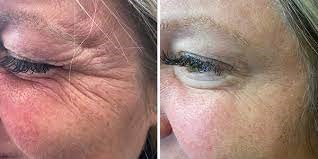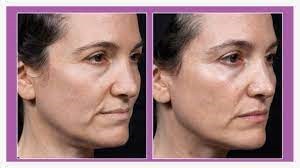RF Skin Tightening


Radio-frequency skin tightening and lifting is a minimally invasive, non- surgical process that helps tighten and lift sagging skin. This process uses radiofrequency waves on the skin to heat the collagen under the skin’s surface. This causes the skin to contract, tighten and lift. The process provides an alternative to facelift and other cosmetic surgeries. Multiple sessions are required for best results. Each sitting takes about 30-40 minutes and the sittings are repeated at 4 to 6 weekly intervals. There is a feeling of a little warmth on the skin during the sessions but the sessions are more or less painless and very comfortable.
What is Radiofrequency Skin Tightening?
Radiofrequency (RF) therapy, also called radiofrequency skin tightening, is a nonsurgical method of tightening your skin.
The procedure involves using energy waves to heat the deep layer of your skin known as your dermis. This heat stimulates the production of collagen.
Collagen is the most common protein in your body. It creates the framework of your skin and gives your skin its firmness.
As you age, your cells produce less collagen, which leads to sagging skin and wrinkles. Skin laxity occurs around age 35 to 40 when the quantity and quality of your collagen begin to decline.
RF therapy has been used since 2001 to fight against sagging skin and signs of ageing. In this article, we’re going to look at how this cosmetic therapy works and what potential benefits it has for your skin.
Potential Benefits?
The primary benefits of RF therapy are tightening your skin and getting rid of wrinkles. However, RF therapy may also help fight sun damage due to its ability to stimulate the production
RF for face slimming
RF treatment has the potential to be used as a nonsurgical method of slimming your face. A looked at the effect of using RF therapy to break down fat in the lower face of 14 middle-aged Asian women.
After 5 weeks, more than 90 per cent of the women had a reduction in fat, and 60 per cent were satisfied or very satisfied with their results. The only side effect observed was mild redness several hours after the procedure.
